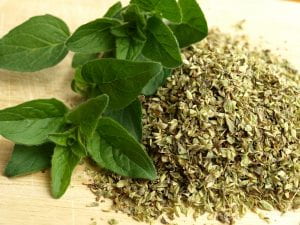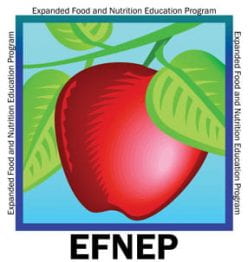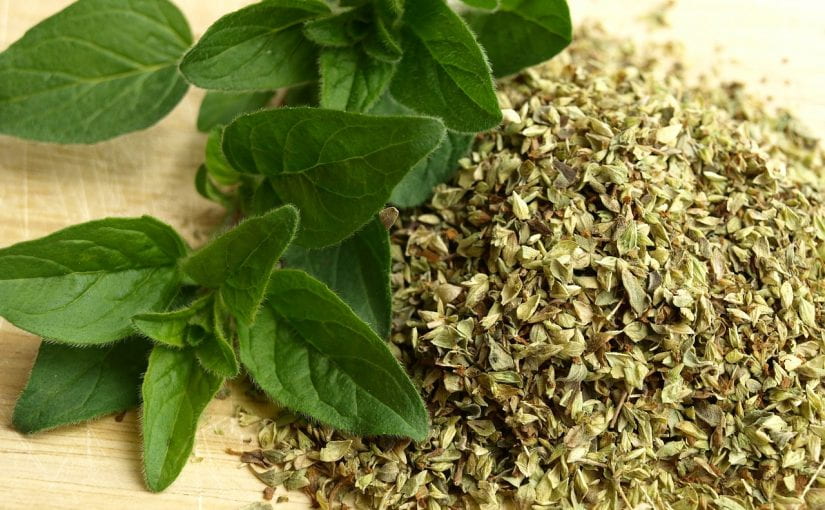Herbs fresh or dried are a great way to add either subtle nuances or a blast of flavor to some of our favorite culinary creations. They will enhance the flavors present or provide a complexity of layered flavors in the dishes they are added to. Whether you are growing your own herbs in the garden or containers or buying them at farmer’s markets, the store, or online take some time to learn more about them. Check out Healthy Cooking with Fresh Herbs for ideas on herb- food combinations, storing fresh herbs, and even basic growing tips. Then peruse Uses and Culture of Culinary Herbs to further explore more herb usage and explicit planting tips. If this information sparks an interest in growing herbs in your own garden or in containers you can find helpful how-to information in Gardening with Herbs and Planting Herbs in a Container. These resources can all be found at cceschoharie-otsego.org/culinary-herbs.
Using herbs can be simple. Try adding your favorite fresh mint leaves to water for a refreshing beverage. Caraway seeds are not just for rye bread, added to mashed potatoes they elevate that dish to another level. Dill weed and celery seed added to sour cream or plain Greek yogurt makes a great vegetable dip, though go sparingly as both herbs impart a strong flavor. When using fresh herbs use a sharp knife or herb scissors for chopping so the delicate herb leaves are cut rather than crushed. Dried herbs are concentrated and tend to have stronger flavors than their fresh counterparts. If you are substituting fresh herbs for dried in a recipe you would use three to four times the amount of fresh than the recipe calls for dried and add them towards the end of the cooking time.
For more Life’s Solutions tasteful additions try these fresh and dried herbs herb combinations right out of the pages of French cuisine.
Fines Herbes- Known for its delicate, bright, and fresh flavors, this mixture uses fresh herbs and is commonly used in mild flavored dishes like salads, egg dishes, and poultry recipes that won’t overpower its pleasantly subtle flavor. Fines herbes are typically added at the end of cooking, as excessive heat or cooking time can deplete their gentle aroma and flavor.
Ingredients
1 tablespoon chopped fresh parsley
1 tablespoon chopped fresh chervil
1 tablespoon chopped fresh tarragon
1 tablespoon chopped fresh chives
Combine the chopped herbs in a bowl. Use at the end of cooking to achieve the most flavor, or freeze in ice-cube trays filled with water or chicken stock for later use.
Herbes de Provence- This dried herb blend packs a more powerful, hearty flavor. While the recipe for this mixture is flexible, the basic recipe includes basil, fennel, marjoram, parsley, rosemary, tarragon, and thyme. Other recipes may include crushed bay leaves, savory, chervil, sage, oregano, lavender, and mint. This herb blend can be added at the beginning of the cooking time allowing flavors to develop in vegetable dishes, soups, and stews. It can also be used as a dry rub to season meats or chicken or sprinkled on fish and salads for a pop of flavor.
Ingredients
1 tablespoon dried fennel seeds
2 tablespoons dried rosemary
2 tablespoons dried basil
2 tablespoons dried marjoram
2 tablespoon dried parsley
2 tablespoons dried thyme
1 tablespoon dried tarragon
Grind the fennel seeds and rosemary in a spice grinder or with a mortar and pestle. Pour into a mixing bowl. Stir in the remaining herbs until well combined. Store the mixture in an airtight container. Mixture can be kept in a cool, dark, dry place for six months to a year.
For an easy Provençal chicken dinner, coat a skinless chicken breast(s) in olive oil and sprinkle both sides with salt and herbes de Provence, marinate for an hour in the refrigerator in a covered container or resalable bag, then cook on the grill or roast in a 400°F oven for 22 to 26 minutes.
Use a meat thermometer to check for doneness, poultry should reach an internal temperature of 165°F.
If you are interested in more recipes, nutritional information, or classes, visit our website at
www.cceschoharie-otsego.org or contact Michelle Leveski, Nutrition Program Educator by calling 518-234-4303 ext. 115 (please leave a message), or emailing her at mml39@cornell.edu.
To read more articles like this subscribe to the “Life’s Solutions” blog at https://blogs.cornell.edu/efnep-schoharie-otsego/ .


